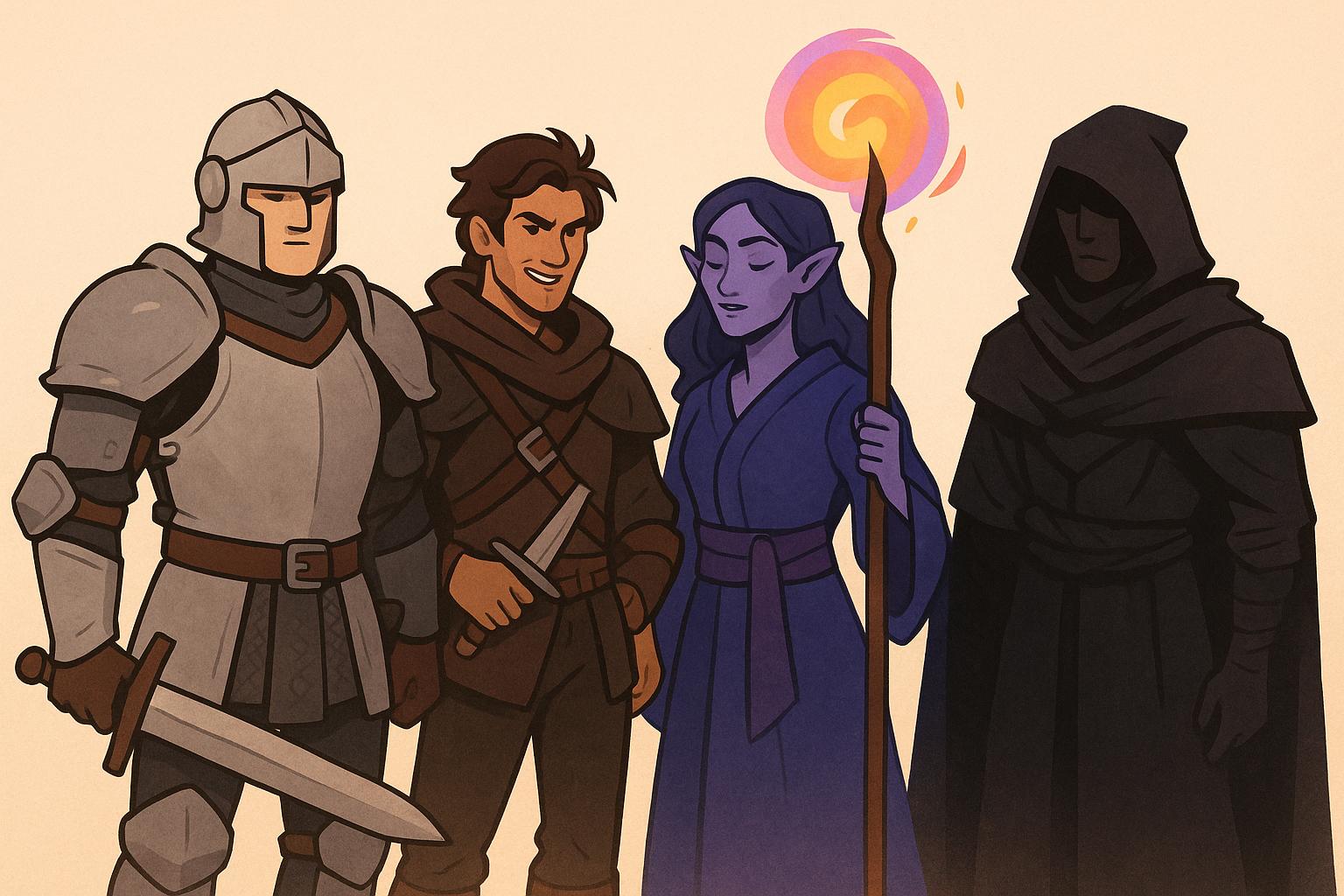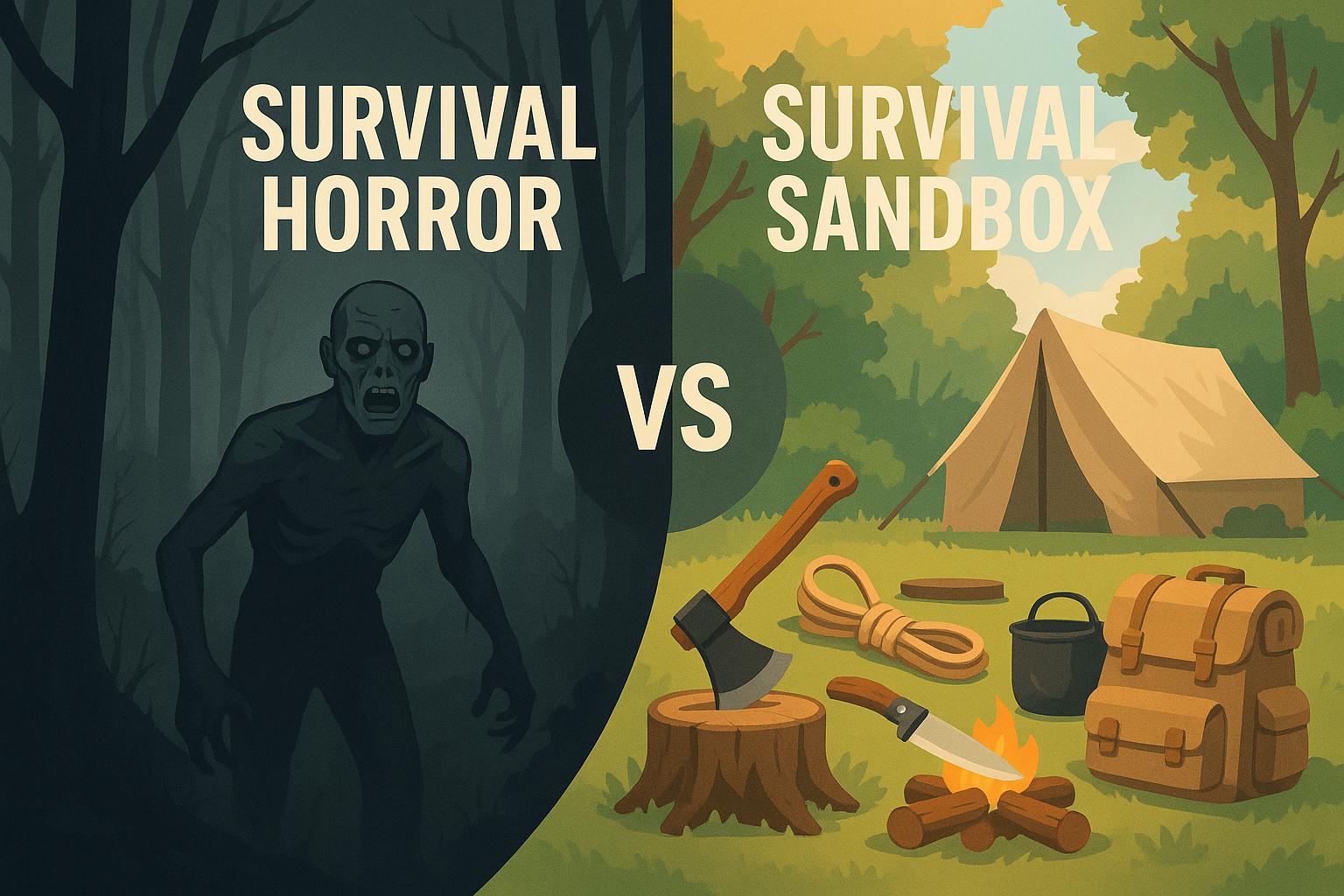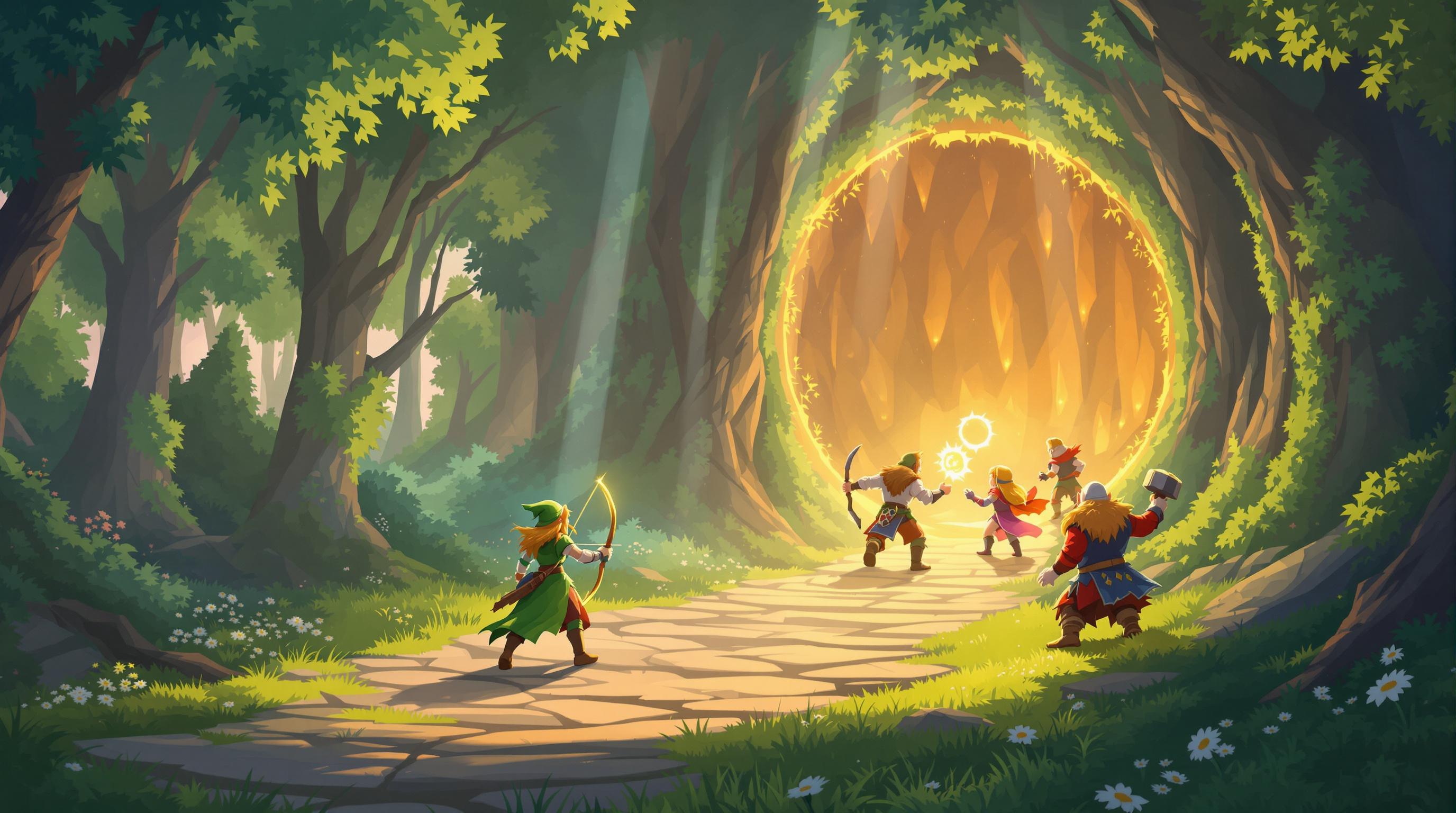In tabletop role-playing games (TTRPGs), mechanics are the rules that shape gameplay and influence player decisions. They balance structure with creativity, impacting how players interact with the game world and each other. Here’s a quick breakdown:
- Simulationist Mechanics: Focus on realism, like combat and survival rules in Dungeons & Dragons, encouraging strategic thinking.
- Narrative Control Mechanics: Let players shape the story, such as fate points in Fate Core or collaborative tools in Apocalypse World.
- Conflict Resolution Systems: Handle challenges with dice rolls, story points, or mixed systems, adding unpredictability and strategy.
Well-designed mechanics balance freedom and structure, empowering players to make meaningful choices while keeping the game coherent. Whether through resource management, narrative tools, or flexible rules, these systems define the flow of the game and enhance player agency.
| Type of Mechanic | Example Game | Key Feature |
|---|---|---|
| Simulationist Mechanics | Dungeons & Dragons | Realism-focused, detailed combat |
| Narrative Control Mechanics | Fate Core | Player-driven story elements |
| Conflict Resolution Systems | The One Ring RPG | Blends dice rolls with storytelling |
TTRPG design continues to evolve, incorporating digital tools and new mechanics to enhance player-driven experiences. Whether you’re a player or designer, understanding these systems is key to creating memorable games.
Types of Mechanics Affecting Player Choices
Simulationist Mechanics: Realism and Immersion
Simulationist mechanics pull players into the game by mimicking real-world conditions. In Dungeons & Dragons, for example, these mechanics show up in detailed combat rules and survival elements. From movement and physics to resource management, these rules encourage players to think strategically and make calculated decisions [3].
Mechanics for Narrative Control
Some modern TTRPGs give players tools to steer the story. Games like Fate Core use fate points, while Apocalypse World incorporates collaborative worldbuilding mechanics. These elements let players actively shape the narrative [2][4].
Conflict Resolution Systems
Conflict resolution mechanics add an element of unpredictability, forcing players to weigh risks and strategize. These systems determine how challenges are resolved and directly impact the decisions players make.
| Resolution Type | Example Game | Key Feature |
|---|---|---|
| Dice-Based | D&D 5E | Uses a variety of dice rolls |
| Story Points | Fate Core | Allows narrative shifts through points |
| Mixed Systems | The One Ring RPG | Blends dice rolls with narrative mechanics |
For those curious about how different games handle these systems, the TTRPG Games Directory offers detailed breakdowns. It’s a helpful resource for players and designers looking to understand how mechanics influence gameplay and decision-making.
These mechanics work together to shape the gaming experience. Simulationist mechanics immerse players in the game world, narrative tools let them craft the story, and resolution systems handle the unknowns. Together, they guide player choices and define the flow of the game [3].
Designing Mechanics for Player Agency
Balancing Freedom and Structure
Game designers often face the challenge of crafting mechanics that give players a sense of control while ensuring the game remains coherent. This involves creating frameworks that guide decision-making without stifling creativity. Combining rules with storytelling, narrative mechanics allow for gameplay that evolves naturally and gives players a sense of influence.
Take Fate Core as an example. It uses a point-based system that lets players shape the story without overwhelming them with too many choices or rigid guidelines. The core rules provide structure, decision points offer meaningful choices, and flexible options encourage players to think outside the box.
Flexibility in Rules
Flexible mechanics separate routine gameplay from critical moments, maintaining a smooth flow while emphasizing decisions that matter. Many modern games use systems that adapt to different player styles. For example, "success with complications" mechanics ensure even failed attempts move the story forward in interesting ways.
Designers can create this kind of flexibility by using modular systems, adjusting the level of narrative control, and rewarding creative approaches to problem-solving. This approach allows players to mold the game in ways that feel personal and engaging.
The TTRPG Games Directory highlights games that successfully use these flexible systems. By analyzing these examples, designers can develop mechanics that strike the right balance between structure and freedom, giving players a meaningful role in shaping the game world [5].
Making Player's Actions Matter in TTRPGs
sbb-itb-b8b00a5
Examples of Mechanics in TTRPGs
Let’s explore how different tabletop role-playing games (TTRPGs) incorporate mechanics that give players more control over their choices and the story.
Classic Games: Dungeons & Dragons and Others
Dungeons & Dragons (D&D) showcases how traditional mechanics shape player decisions. For example, the spellcasting system requires players to manage resources carefully, balancing combat needs with storytelling opportunities [1]. The initiative system and skill checks add layers of strategy, encouraging tactical positioning and creative problem-solving [3].
Indie Games: Narrative Control Mechanics
Indie TTRPGs have introduced fresh ways to give players control over the story.
- Blades in the Dark uses a "flashback" mechanic, letting players fill in their past preparations during the game instead of planning everything upfront [4].
- Fiasco focuses on collaborative storytelling, where players build relationships and plot twists together, driving the entire narrative [2].
- Apocalypse World ensures player decisions directly influence the story through its action-based system, keeping the narrative dynamic and player-driven [4].
Exploring More Games: TTRPG Games Directory
The TTRPG Games Directory is a resource for discovering games with diverse mechanics that prioritize player choice. It categorizes games by their approach - whether they focus on combat systems or narrative-driven play - making it easier to find something that suits your style.
For players and designers alike, the directory offers detailed breakdowns of each game’s mechanics and how they affect player decision-making. It’s a handy guide for finding games that strike just the right balance between structure and storytelling freedom.
Conclusion: The Impact of Mechanics on Player Experiences
Key Points
Tabletop RPG (TTRPG) mechanics play a critical role in shaping how players engage with the game and its world. Thoughtfully crafted mechanics strike a balance between structure and freedom, giving players the tools to make choices that influence both the story and gameplay.
Over the years, TTRPG design has demonstrated that mechanics can achieve multiple goals at once. From classic games to indie creations, different mechanical approaches have broadened the scope for player-driven storytelling and decision-making.
| Mechanical Aspect | Effect on Player Experience |
|---|---|
| Flexible Rules | Sparks creativity and encourages freedom |
| Narrative Control | Gives players influence over story outcomes |
| Resource Management | Adds layers of strategy and planning |
| Conflict Resolution | Establishes clear outcomes and consequences |
Future of TTRPG Design
TTRPG design is constantly evolving, with exciting advancements on the horizon. Digital tools are blending with traditional gameplay, offering hybrid experiences, while AI systems show potential for dynamic storytelling that still respects player choices.
Emerging trends in TTRPG mechanics include:
- Systems that address emotional and social challenges
- Mechanics tailored to different playstyles and preferences
- Digital resources that enhance, rather than replace, traditional gameplay
As these systems develop, the focus remains on empowering players and enabling meaningful choices. This dedication to player-driven experiences ensures that every game session feels personal, engaging, and memorable for everyone at the table.
FAQs
What is an example of player agency?
Player agency in TTRPGs refers to the ability of players to make meaningful decisions that shape the story, characters, and world around them. This can include elements like narrative control, character creation, and mechanical choices.
Here’s a table showcasing examples of player agency in action:
| Type of Agency | Example |
|---|---|
| Character Creation | In World of Darkness, players craft detailed backstories and relationships that influence the story and NPC interactions. |
| Mechanical Choices | The "Position" and "Effect" system in Blades in the Dark allows players to weigh risks and rewards in their actions. |
| Narrative Control | Spending "Willpower" points to change the outcome of a scene or event. |
Player agency goes beyond just character decisions - it can also shape the world itself. Well-designed mechanics give players the tools to influence both individual scenes and the overall campaign narrative in meaningful ways.
For more insights into how different systems handle player choice and control, check out the TTRPG Games Directory, which breaks down these mechanics in detail.


